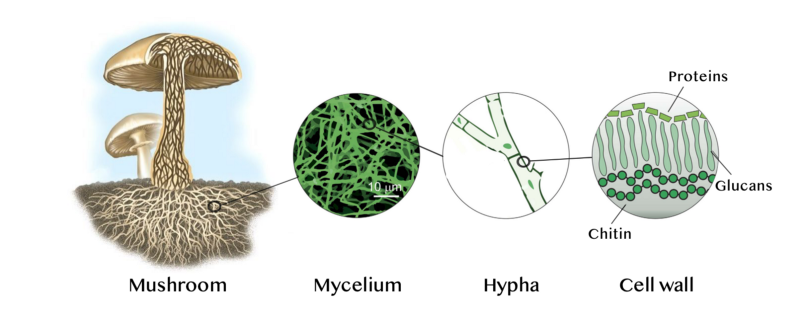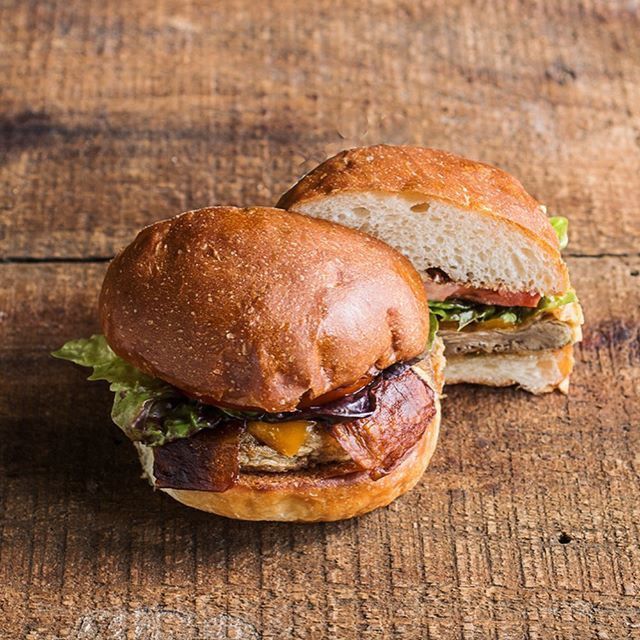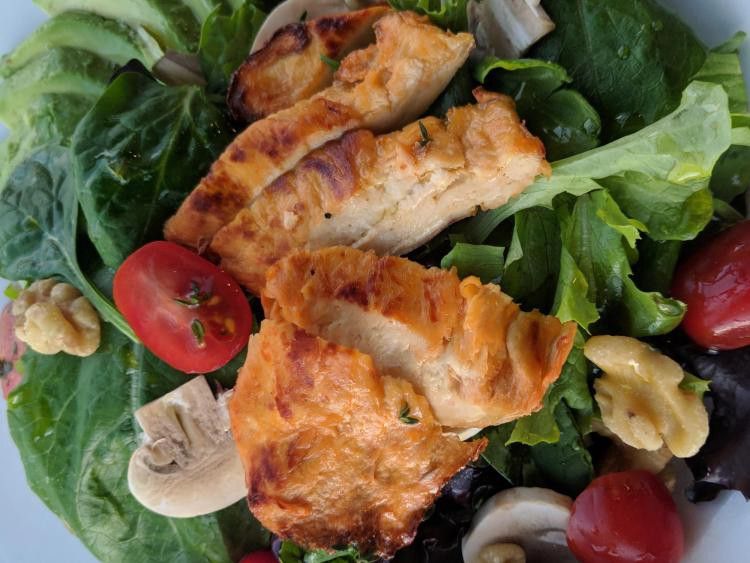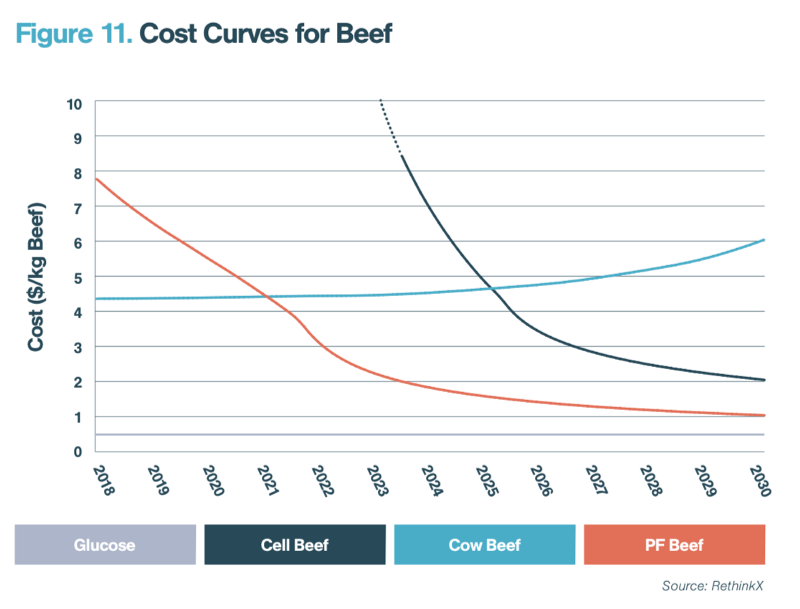Beyond Impossible: How fungi could become our future protein source
October 25, 2019
Read Time
5 min

There’s a food fight on all fronts against plant-based fast food and social media-fueled fried chicken sandwiches. On the one hand, the battle of Chick-Fil-A vs. Popeyes’ new sandwich (which is making a comeback any week now). On the other, a growing concern around the nutrition of today’s plant-based meat substitutes voiced by the CEOs of Chipotle and Whole Foods. Now, celebrity chefs and startups are playing into these narratives, offering up a potentially better solution: fungi. It’s all unfolding on Instagram.
Fried Chicken of the Woods Mushroom Sandwich from Dan Barber
Last month, Dan Barber of Blue Hill & Row-7 responded to Popeye’s social sandwich stunt with one made of fried foraged Laetiporus cincinnatus, aka chicken of the woods mushroom on a pure whole wheat bun. “Dear Popeyes, No doubt you’ll soon follow your record breaking chicken sandwich with a vegetarian, fake meat substitute,” he quipped, dropping the mic with a “#chickendsandwichwars” hashtag. Rene Redzepi and David Zilber of Noma in Copenhagen recently put up a video of a sliced, pickle-brined wild Fistulina hepatica that has the consistency and taste of pastrami. “Someone should figure out how to factory farm THESE,” Redzepi posted emphatically.
As it turns out, there are a crop of startups addressing that need at scale by naturally fermenting mycelium, the vegetative fungus that produces mushrooms. It forms an intelligent underground network underneath our soil, shuttling nutrients between plants. Its structure of branched hyphae resembles the graph of our modern internet and its filaments are very similar to the extracellular matrix of animals. Mycelium recently became the star of Fantastic Fungi, a new documentary showcasing its many applications from magic Psilocybin mushrooms to a solution for mopping up oil spills. Fermentation occurs vertically indoors with minimal waste (mostly compostable) and little energy consumption. Unlike traditional factory farming, production could be decentralized, housed near end consumers in urban environments. It’s a similar value proposition to that of hydroponic vertical farms like Bowery Farming, Plenty, and AeroFarms to sustainably feed a population of 9 billion by 2050 in dense urban environments.

Unlike Impossible Foods or Beyond Meat, these companies are growing fungus into whole cuts of meat substitutes. One firm, Ecovative, has historically built its business designing sustainable packaging for everyone from Dell to Crate & Barrel and has been testing food applications of its Atlast-branded product with forager chef, Alan Bergo. Its website cites whole cuts as 82% of the total meat industry by value, an area that today’s plant-based incumbents cannot enter due to the limitations of their formulation.

Ecovative recently posted Bergo’s “Chic-Fil-Ain’t” test sandwich, a whole “muscle cut” of mycelium derived from cultivated Hericium erinaceus topped with wild Ganoderma applanatum mycelium bacon and veggies. To settle on these specific strains, Bergo would go through many rounds of cooking, dehydrating, brining, and smoking the mycelium from different species. “From a culinary perspective, you would never think about eating mycelium,” explained Bergo. “That would be like eating apple bark instead of an apple.”
While similar, the fruiting mushroom bodies found in the wild don’t taste the same as their marshmallow-like mycelium grown in a lab, thus requiring lots of experimentation. Because they were not looking to mass produce a packaged product, Barber and Redzepi used polypores, wild species that naturally resemble the texture of meat, as a base for a finished product. According to Bergo, today’s technology isn’t advanced enough to grow these fruiting bodies at scale in a manner that would require minimal processing.
Emergy Foods, a Boulder based startup, was working on an application of mycelium as a porous, bio-carbon battery before it shifted towards a chicken breast alternative to be launched next year in restaurants. SF-based Prime Roots is fermenting mycelium to make a handful of seafood and meat-like products.

We’re finally beginning to leverage the hidden, native intelligence of nature. Emergy claims it has a unique strain of mycelium that doubles every two hours, enabling it to create a finished product overnight that is more nutritious than its analog. Ecovative claims its product needs 9–12 days of growth. Traditional chicken farming would take 12 weeks, requiring food and water, leaving behind waste. Most of these chickens never see the light of day.
What’s new isn’t the technology, but rather consumers’ growing interest in plant-based alternatives to meat that are better for our planet and our bodies. Liquid fermentation is a $150bn market that’s existed since the 1980s and is only growing as many products we consume today like collagen, corn ethanol, and fragrances shift from chemical factories towards biological fermenters. While potentially less sexy than newer startups, there’s already a UK brand of fermented fungus protein called Quorn that can be found in Whole Foods.
Whereas pea and soy-based products like Impossible and Beyond are limited to ground meat, patties/nuggets, and sausages, mycelium is able to mimic the fibrous scaffolding of whole meat cuts with similar amino acids and minerals as animal protein. 90% of the flavor of Emergy’s product is derived from mycelium and 10% from vegetables and spices. While apparently identical in texture and flavor to animal protein, cultured meat startups like JUST, Aleph Farms, and Memphis Meats are currently more expensive to produce and face ethical and regulatory concerns around marketing a familiar product that is now grown in vitro.

“The organic and vegan movement have been subverted by big business. You don’t have to flesh in your mouth to have blood on your hands,” said Bergo, a proud omnivore who, in addition to foraging wild plants, is all about humanely raising meats off of ancestral diets. “Vegans and vegetarians don’t want to think about all this conventional soy going into the Impossible Burger. What is it, like 15 patents in that thing? It’s destroying top soil, it’s monoculture, it’s everything I stand against.”
Let’s declare the #chickensandwichwars over, please welcome #futurefungi.








